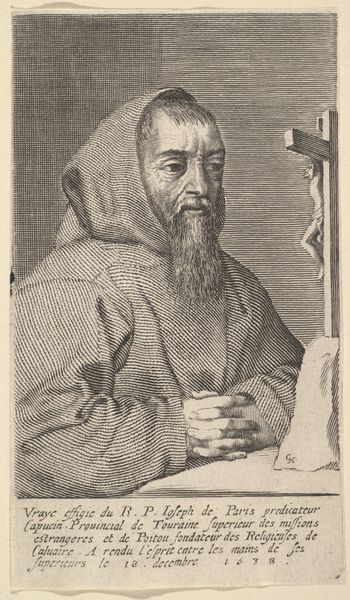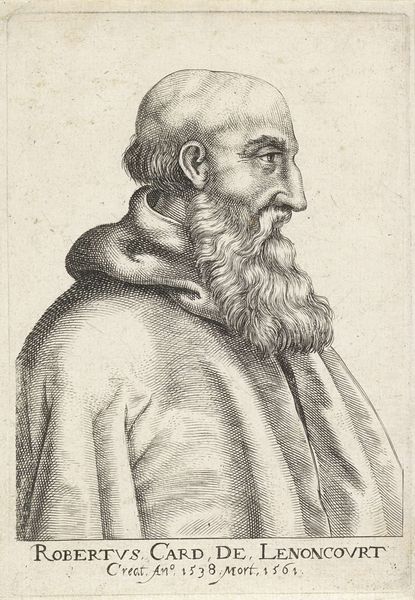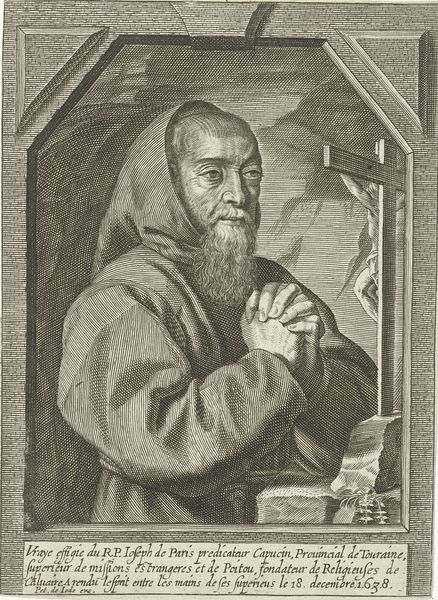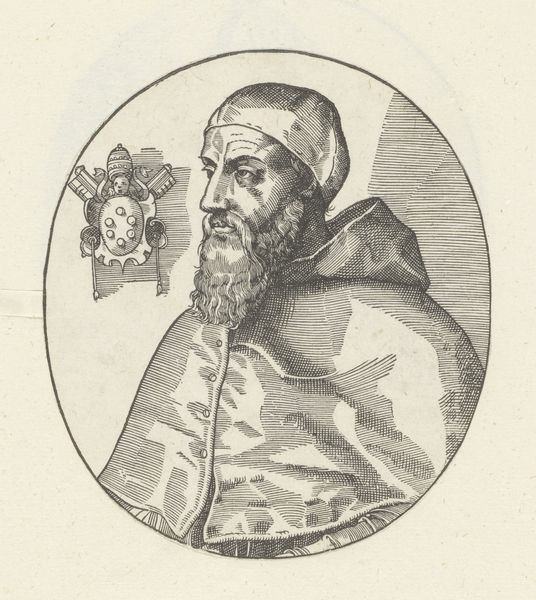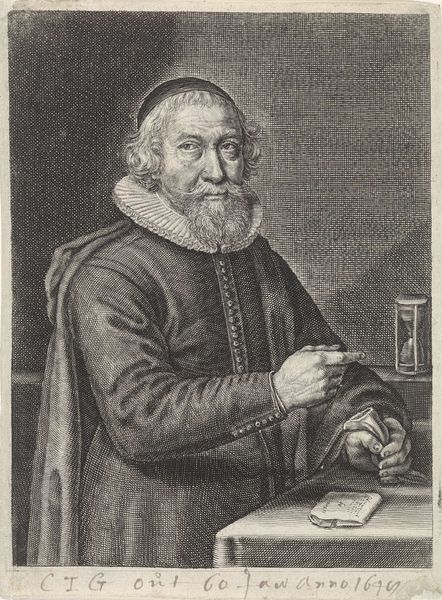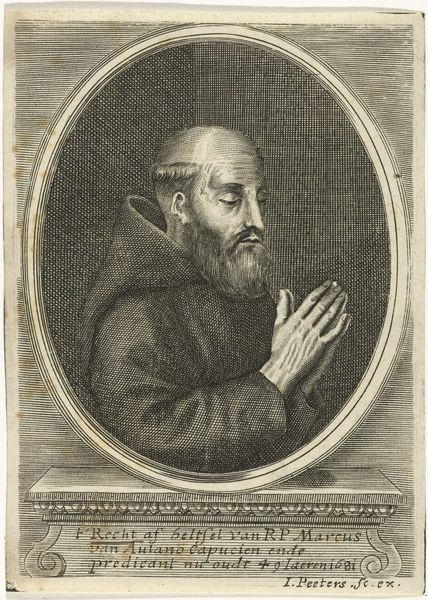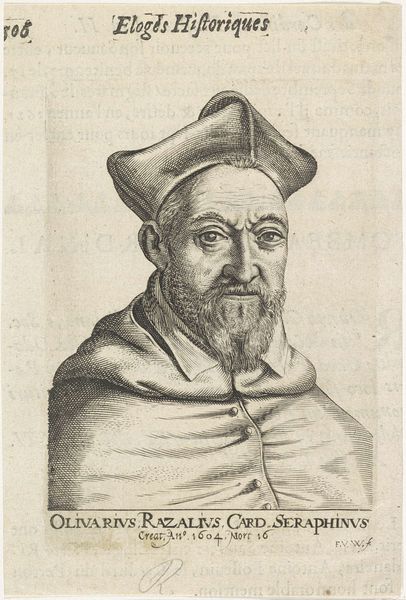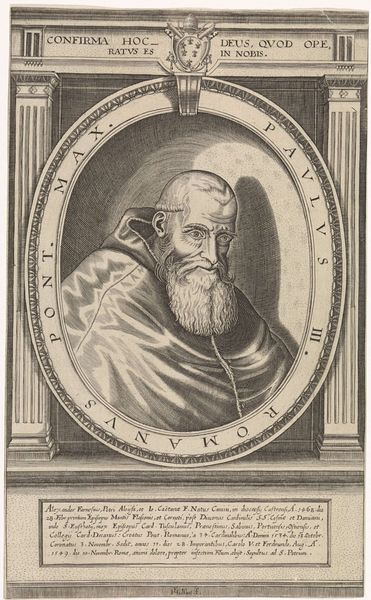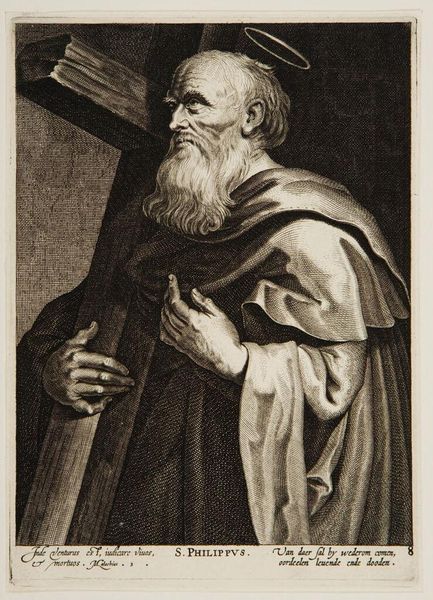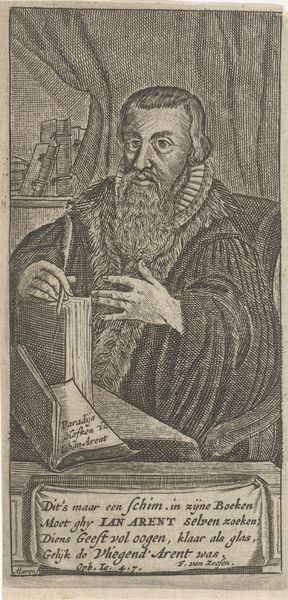
Copyright: CC0 1.0
Editor: This is Claude Mellan's "Father Joseph," made sometime around the mid-17th century. The intricate hatching is quite striking. How might the materials used and the printmaking process itself influence our understanding of the artwork? Curator: The meticulous labor involved in creating this engraving speaks volumes. Consider the copper plate: its cost, the engraver's skill, and the time invested. The print becomes a commodity, reproducing religious imagery for wider consumption. Editor: So, the print functions as both art and a devotional object, shaped by its material production? Curator: Precisely! The very act of reproducing Father Joseph’s image transforms him into a symbol, mediated by the material processes of its creation and circulation. What does that suggest about the role of religious figures in society at that time? Editor: I see your point. The material reality of the print allows the image to reach a wider audience, influencing how people engage with religion and perceive important figures. Thanks for the insight! Curator: An interesting dialogue. Thinking about art through its means of production really shifts our perspective.
Comments
No comments
Be the first to comment and join the conversation on the ultimate creative platform.
